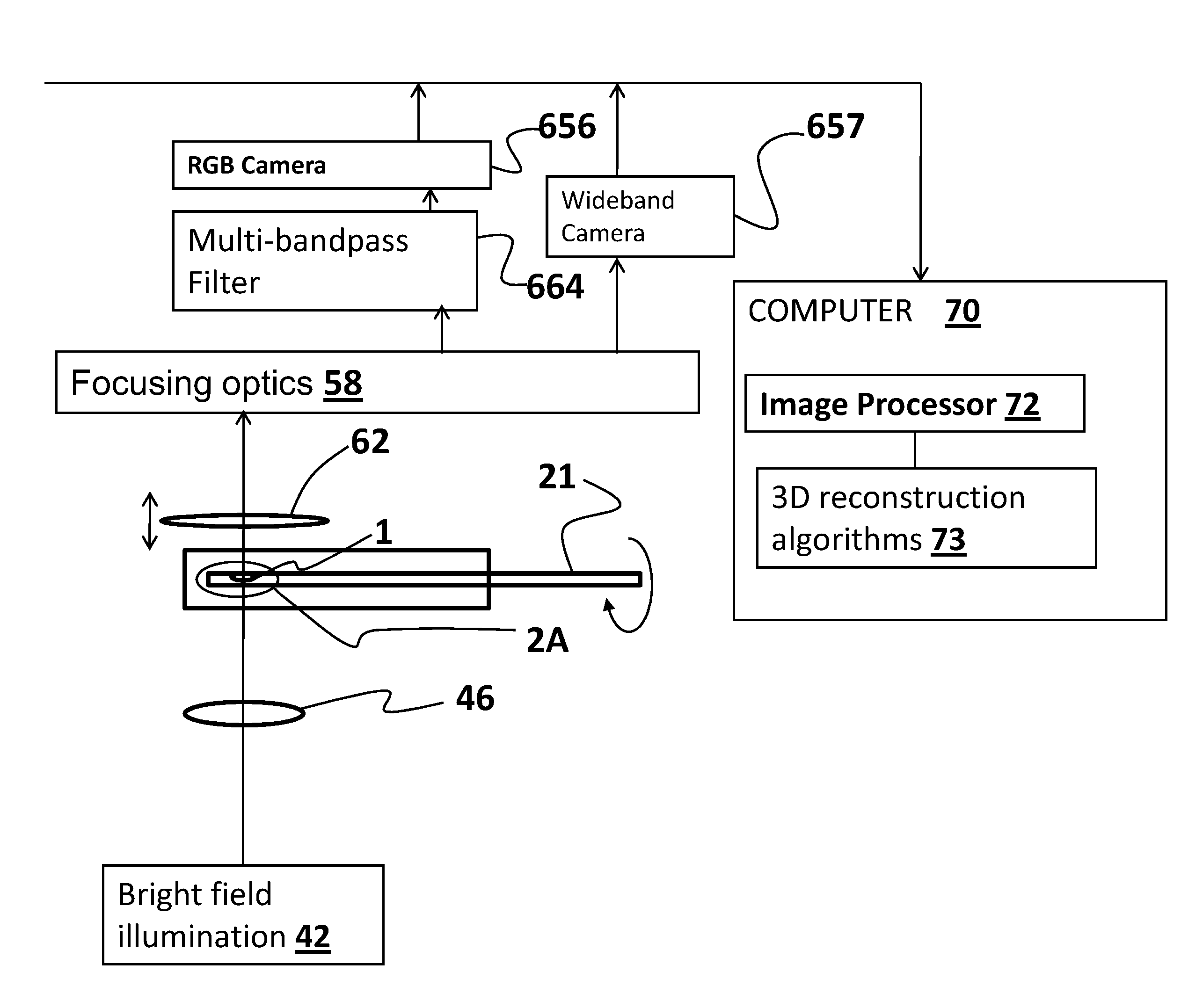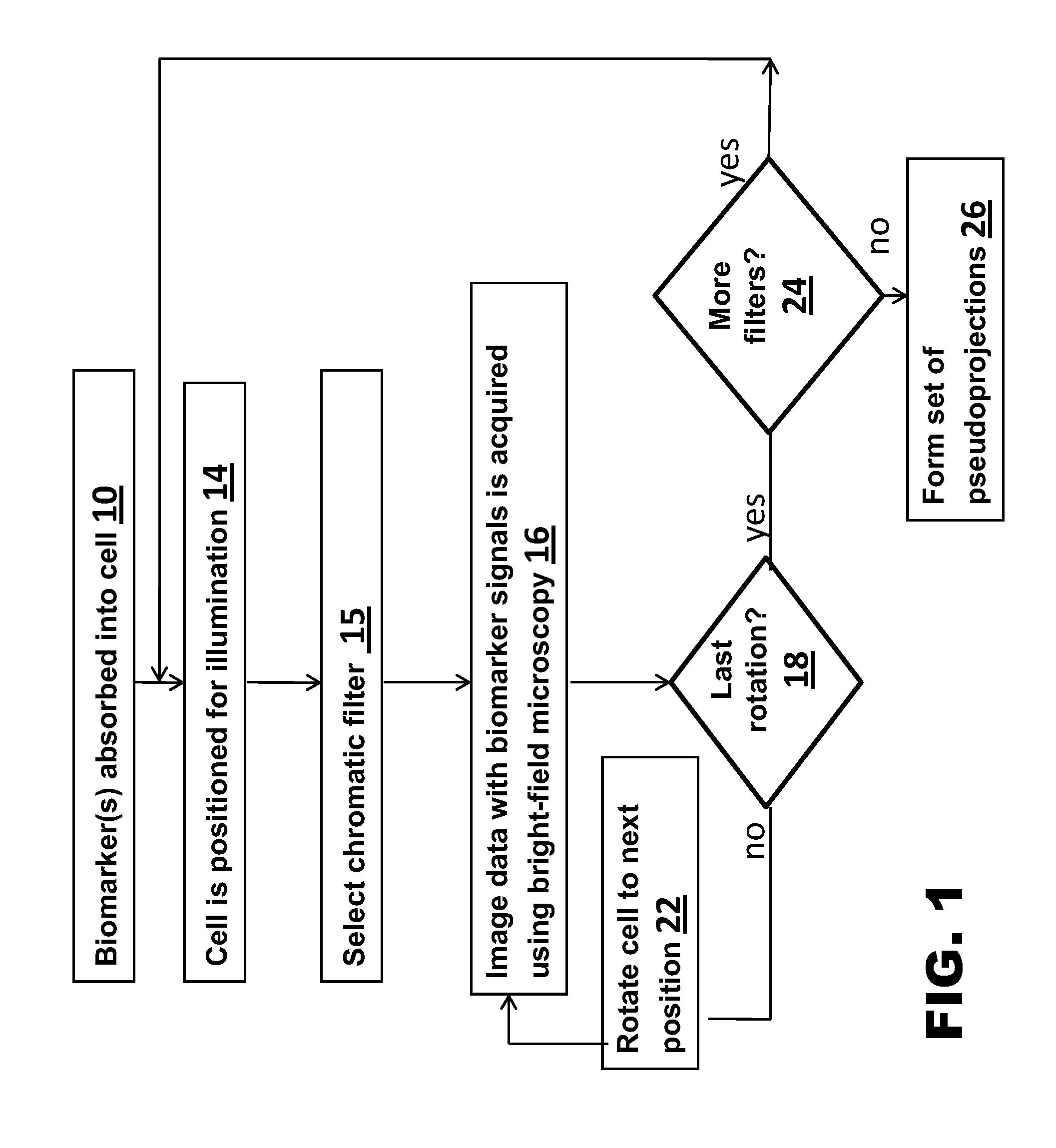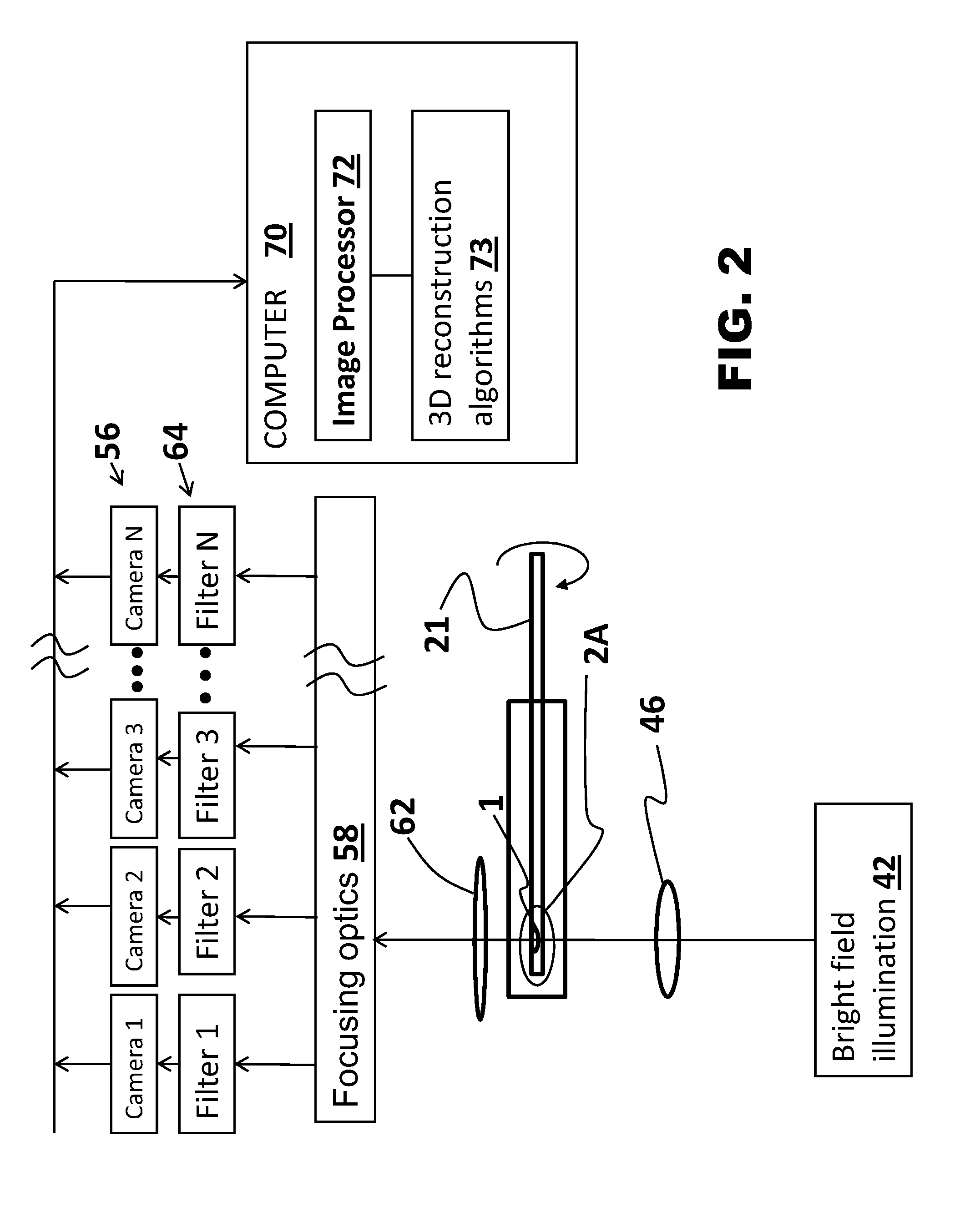Functional imaging of cells with optical projection tomography
a technology of optical projection and functional imaging, applied in the field of optical projection tomography for functional microscopy, can solve the problems of permanent stop of fluorophores, inability to fix, stained live cells,
- Summary
- Abstract
- Description
- Claims
- Application Information
AI Technical Summary
Benefits of technology
Problems solved by technology
Method used
Image
Examples
Embodiment Construction
[0038]The following disclosure describes several embodiments and systems for imaging an object of interest. Several features of methods and systems in accordance with example embodiments are set forth and described in the Figures. It will be appreciated that methods and systems in accordance with other example embodiments can include additional procedures or features different than those shown in Figures. Example embodiments are described herein with respect to biological cells. However, it will be understood that these examples are for the purpose of illustrating the principles of the invention, and that the invention is not so limited.
[0039]Additionally, methods and systems in accordance with several example embodiments may not include all of the features shown in these Figures. Throughout the Figures, like reference numbers refer to similar or identical components or procedures.
[0040]Unless the context requires otherwise, throughout the specification and claims which follow, the ...
PUM
 Login to View More
Login to View More Abstract
Description
Claims
Application Information
 Login to View More
Login to View More - R&D
- Intellectual Property
- Life Sciences
- Materials
- Tech Scout
- Unparalleled Data Quality
- Higher Quality Content
- 60% Fewer Hallucinations
Browse by: Latest US Patents, China's latest patents, Technical Efficacy Thesaurus, Application Domain, Technology Topic, Popular Technical Reports.
© 2025 PatSnap. All rights reserved.Legal|Privacy policy|Modern Slavery Act Transparency Statement|Sitemap|About US| Contact US: help@patsnap.com



